Telling the difference between a crow vs. raven is a quickly learned skill. Once you know how each bird acts, the areas they prefer to inhabit, and their physical features, you’ll be able to tell a crow from a raven at quite some distance.
In this guide, we will take from up close and personal to as far away as distant birds in flight to help you spot the differences between crow vs. raven.
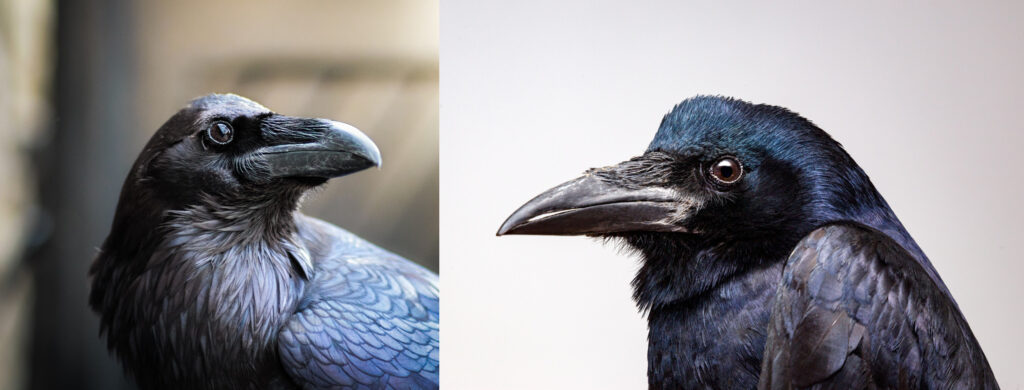
Crow vs. Raven: Up close and personal.
Crows are more urban birds, while ravens prefer rural areas.
Ravens average two feet in length, have wing spans as large as four feet and tip the scales at two and a half pounds. Crows average one and a half feet in height, have two-and-a-half foot wing spans, and run about 1.25 pounds.
As you can see in the picture above, the raven’s beak is more curved and more significant than the crow’s. The raven’s throat feathers are also longer than those of a crow. In addition, a raven’s eyes are gray to black, depending on the light, and appear to sit closer to the bill than a crow’s eyes.
Raven vs. crow: Walking on the ground. Crows typically walk like any other landed bird. Ravens however, have a distinct and conspicuous habit of taking a step and then taking some two-footed hops before taking the next step.
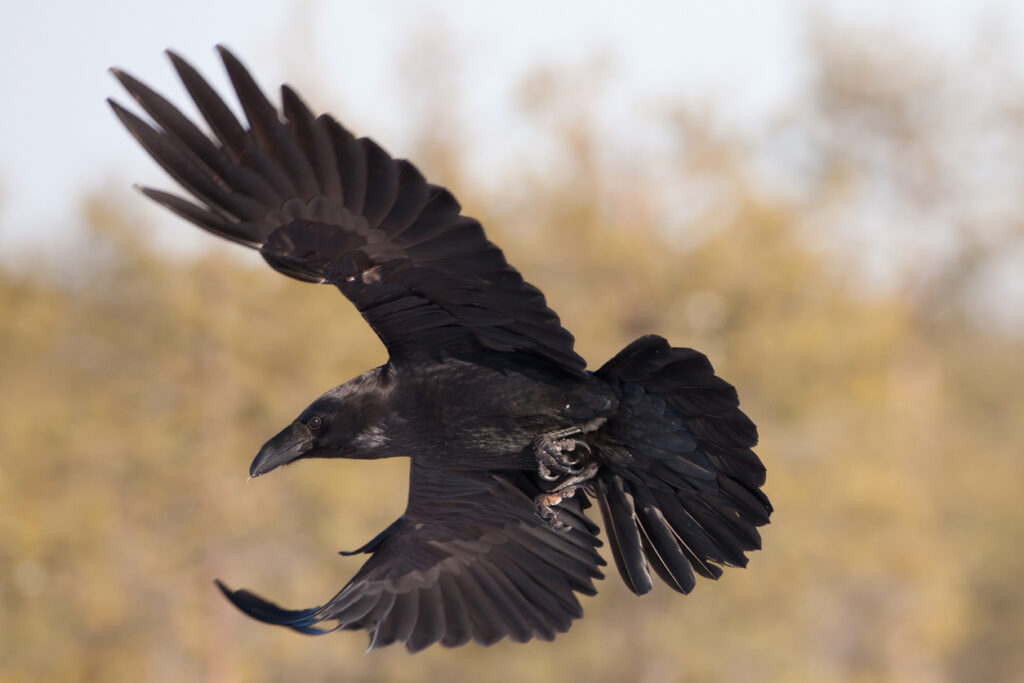
Raven vs. crow: Differences in their calls.
Crows are thought to possess about 20 different calls. These calls include alarm calls, mobbing calls, territory calls, and the most common, the simple grating caw sound.
Ravens are known for their loud croaking sound, which can be heard a mile away and is often made when other ravens are nearby. Raven calls deeper-toned and clangorous than crow calls.
Crows and ravens can associate and identify each other’s calls, using this information to communicate their territorial spaces. Both birds can also mimic each other’s call, but their “talking” between each other is limited to warning the other off.
Crow vs. raven: Telling them apart while they are in flight.
The crow’s tail is fan-shaped, the raven’s is shaped like a wedge. The wings of a crow are blunt, the wings of raven are pointed.
Raven feathers are glossy, with a wet, oil sheen, and in sunlight, the have a shiny purple or blue tint. Crow feathers have lighter streaks of black running through them, giving their feathers an unpolished look. In sunlight, crow feathers are purplish with green-tinted edges.
Crow fly by flapping their wings almost constantly, raven soar and ride the thermals as often as possible.
Crows and ravens will drive off eagles and hawks by forming into attacking flocks that dive into and harass these birds of prey in order to protect the food, eggs, chicks, and nests.
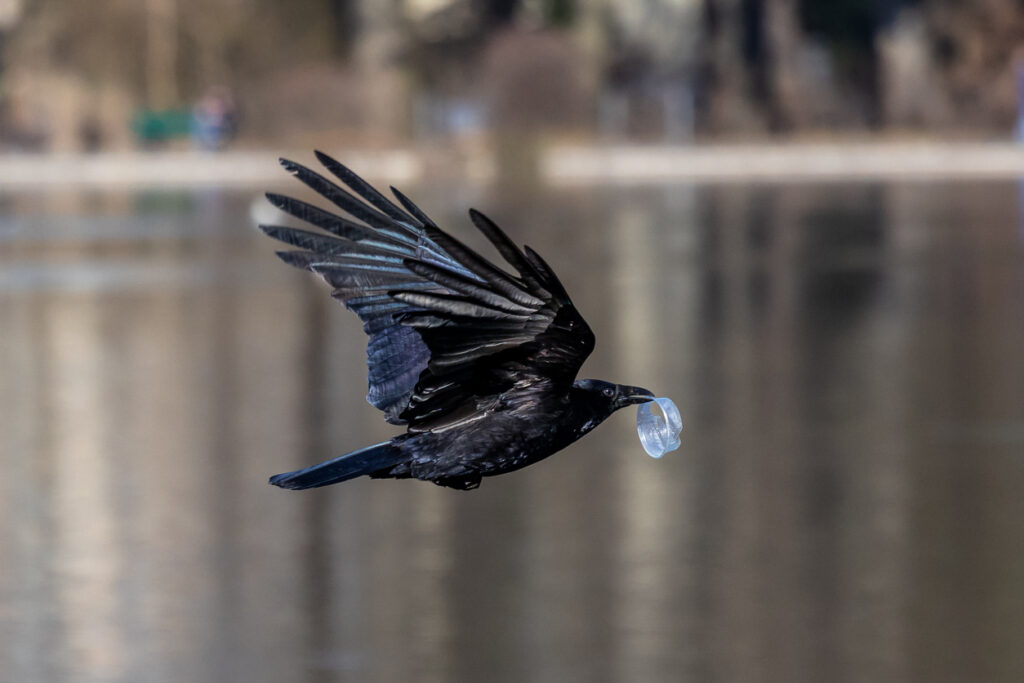
Raven vs. crow: Diet
Ravens are omnivorous and will feed on everything from eggs, berries, small mammals, and carrion.
Crows are also omnivorous (eating the same things as ravens) but adding small snakes, frogs, insects, spiders and worms to their diet.
Crow vs. raven: Who is smarter?
There isn’t a clear winner in the crow vs. raven battle of the brains. Ravens and crows both make and use tools. Creating and using tools requires adapting to new environments, problem-solving skills, and planning before undertaking a task.
Researchers working with ravens believe they are at least as intelligent as chimpanzees. Crows, on the other hand, can recognize human faces and respond to them following past outcomes. For example, if a human were a threat before, a crow would avoid that person.
Today, both crows and ravens are believed to equally good at reasoning, and on a par with a seven year old human’s ability to reason.
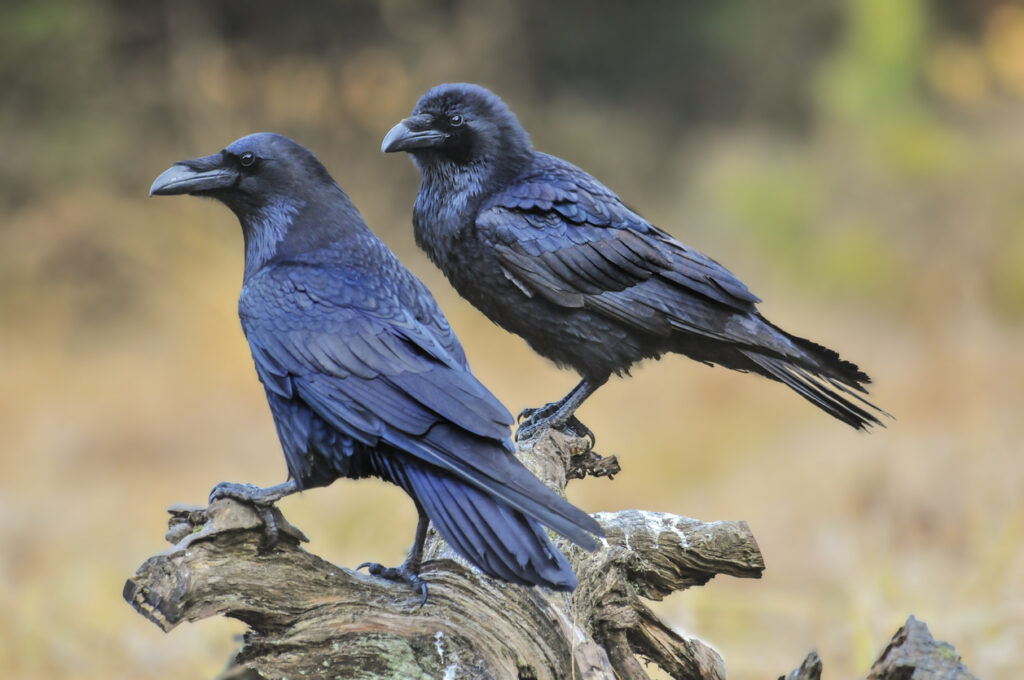
Crow vs. raven: Lifespans and worldwide population numbers.
In the wild, the raven has the longer lifespan of 10-15 years. A crow’s life span is 7-8 years.
There are twice as many crows in the world (31 million) as ravens (16 million).
The crow is classified as a migratory nongame bird in the United States, and there are established hunting seasons with bag limits and hunting methods regulated by the U. S. Fish and Wildlife Service.
A this time, the U. S. Fish and Wildlife Service prohibits raven hunting. However, it has the authority to manage raven populations if they interfere with cattle or sheep operations.
How closely related are ravens and crows?
Crows and ravens are from the same genus (Corvus) and have the same ancestor but are not the same species. In the millions of years since that shared ancestor, they have evolved, developed different features, and become distinguishable from each other.
There are enough differences between crows and ravens today to prohibit their hybridization. Not only has it been too long since they had a close ancestor, but they can also no longer be friends or tolerate each other.
In fact, crows are aggressive toward ravens during their mating season, and ravens will steal and eat the eggs of crows.
Having said all that, there does appear to be one documented case of a raven and a crow courting, nest building, mating, and successfully rearing a set of hybrid chicks.
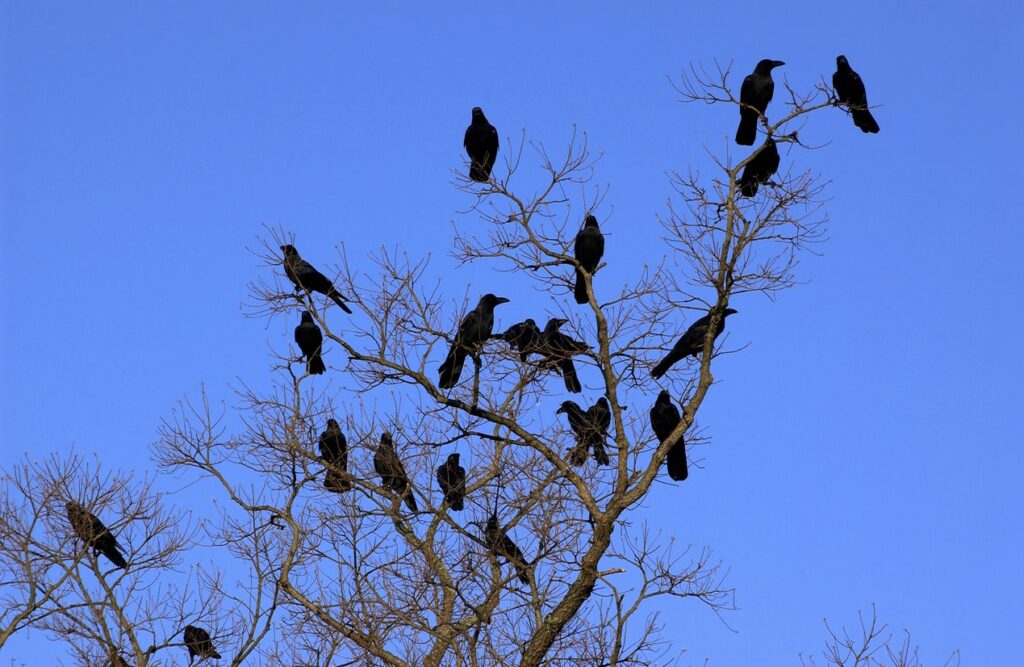
Do crows and ravens conduct funerals?
An often-seen activity among crows and ravens is gathering numbers of birds around a dead member of the same species. Ravens and crows appear to stand around and mourn their death, but this isn’t a funeral; it’s more of an autopsy.
Both species of bird investigate their dead to determine the cause of death. For example, if a predator kills a crow or a raven, this information is critical to the survival of the rest of the flock and is communicated quickly to the others.
Crow vs. raven: Conclusion.
Whether you see a crow vs. a raven can be determined by its size, calls, flight characteristics, and, often, sheer numbers in the flock. While the birds are slightly related to each other, the remain different species.
Ravens and crows also act and behave and travel on the ground differently, and have slightly different diets.
But at least you now have enough clues to tell the difference between a crow vs. raven.


